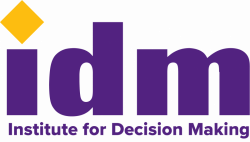If You've Seen One Board, You've Seen One Board...
If You've Seen One Board, You've Seen One Board...
You have probably heard this type of phrase before in some context or another, but it definitely rings true for governing boards. Organizational size, scope of work, geographic reach, financial resources, past experience and personal preferences all lead to differing levels of involvement in governing. As IDM works with economic development and other organizations across Iowa, we see a spectrum of board involvement from passive to fully engaged.
On one end of the spectrum, passive boards keep activity and participation to a minimum and their main job is approving director decisions and signing off on reports, budgets and work plans. On the other end, a fully engaged board will make key decisions, oversee staff, ensure organizational sustainability, and directly participate in implementing the work of the organization.
So what should your board be doing? The challenge is that the answer really depends on the organization. However, there are basic responsibilities that all boards assume:
Maintaining the legal and ethical integrity of the organization.
Setting the direction for the organization through strategic planning that reflects a shared board and staff vision for the organization’s role, values and priorities.
Overseeing the organization’s activities to ensure that they are effectively addressing the organization’s priorities and fulfilling its mission.
Selecting, supporting and evaluating the executive director.
Ensuring adequate financial resources, as well as providing proper financial oversight and asset management.
Sustaining and enhancing the organization’s public image.
Board members, collectively and individually, make leadership structures unique to their organization. But the ability of an organization to effectively carry out its mission relies on the board, whether engaged or passive, understanding what the organization needs to implement strategies that address its priorities. This understanding is based on knowledge about the organization’s mission. Many board members often find themselves recruited into a seat on the board without really knowing what the organization has been formed to do. New members are left confused and uncertain. Sometimes the red flag questions that surface during IDM planning sessions are the most telling:
What is economic development anyway?
Isn’t a Chamber of Commerce just a social club for businesses?
Community development – we put out the flower pots, right?
Answer these questions through a good board orientation process. Do not assume they know how to be a board member. Start your board members off right with an overview of your mission, vision and strategic plan – what you do, why you do it, what you plan to accomplish, and when and how you expect to reach your goals. Explain board roles and responsibilities. Share your organization’s agreed upon operating policies and have new members sign off on them to minimize potential issues such as micromanagement, rogue decision-making, lack of engagement, and second guessing of decisions made during missed meetings. However, be careful not to shut down suggestions from new board members! You need different opinions and perspectives to help the organization remain resilient over the long term.
Use this same overview and roles/responsibilities conversation with existing board members to re-energize their participation too. Board members should take time for a board self-assessment each year, as well as revisiting the organization’s strategic plan and operating policies. These actions help ensure that the board is leading the organization in the right direction, while helping to change course when things are not working as planned.
Orientation and board education should not be overlooked, regardless of the level of engagement at which your board operates. By investing time and resources in board education, you will be able to deepen your board members’ commitment to your organization, strengthen their understanding of the board’s role, and cultivate a culture of ongoing board and organizational improvement. Consider formalizing a new member orientation process, building educational activities into board meetings, and scheduling retreats to build a sense of teamwork among board members and develop a shared commitment to the organization.
Board members can be the best advocates and ambassadors for an organization. They bring attributes, skills and experience needed to successfully carry out the organization’s mission. As business leaders, community volunteers and opinion leaders, they have the connections, confidence, respect, and access to forums that are invaluable to every organization. You have one board – make the most of it!
Resources:
BoardSource
Bridgespan Group
National Council of Nonprofits
Iowa Nonprofit Resource Center
BoardEffect

